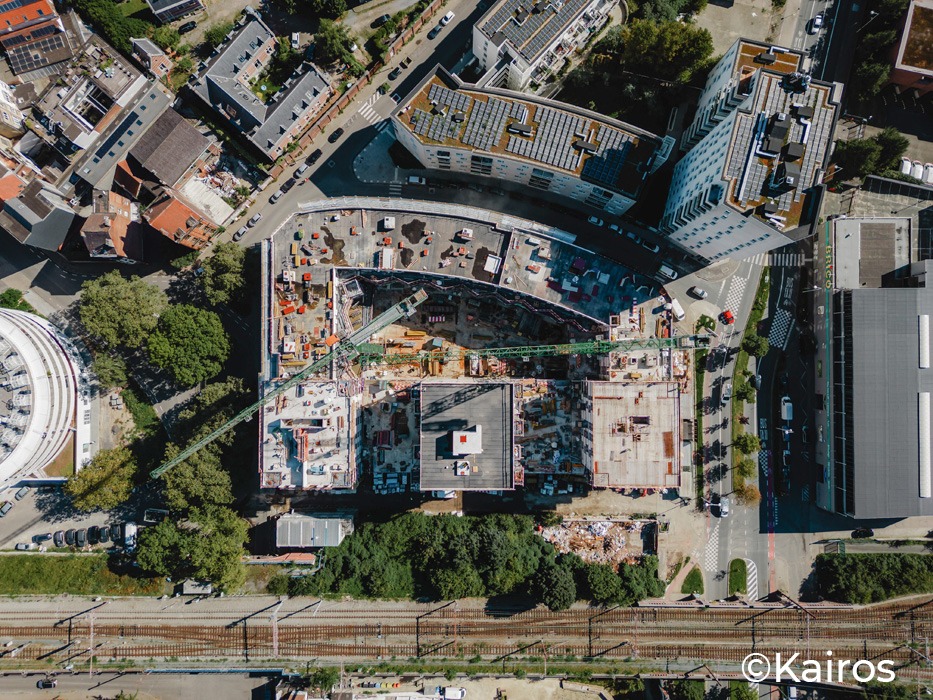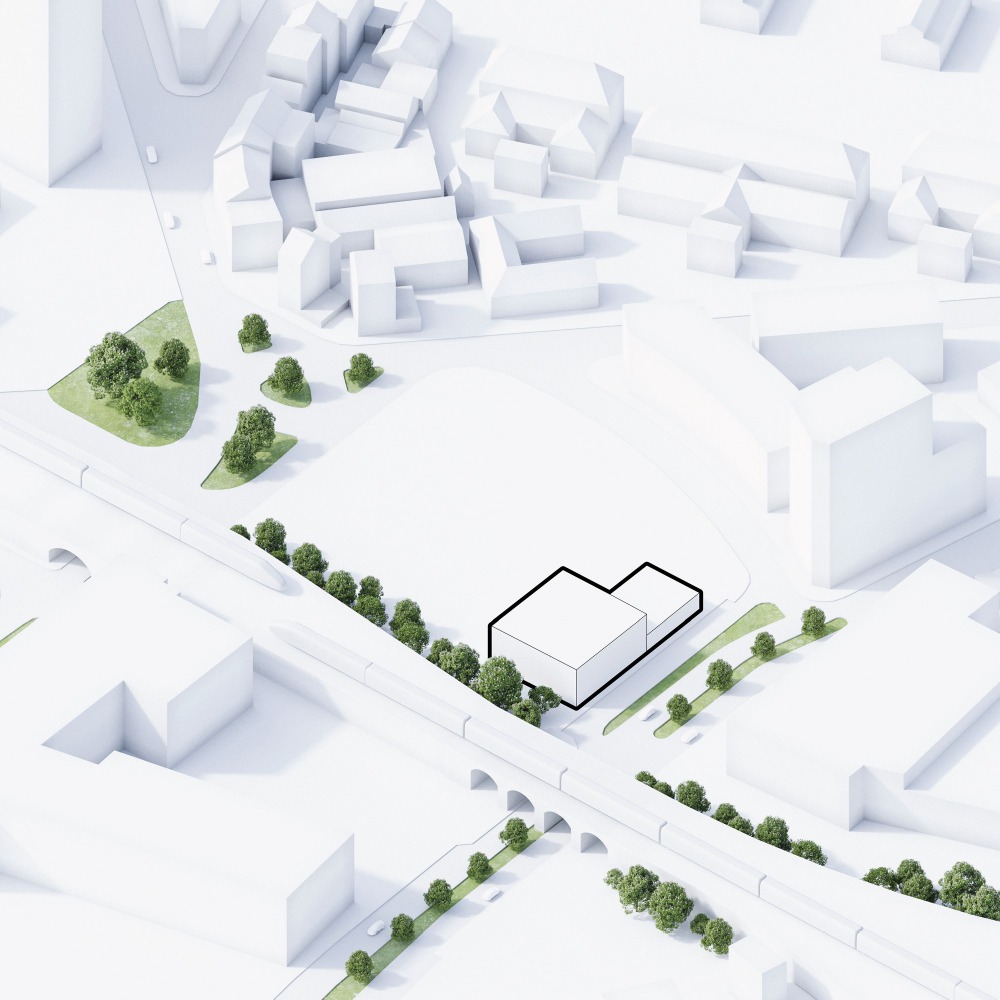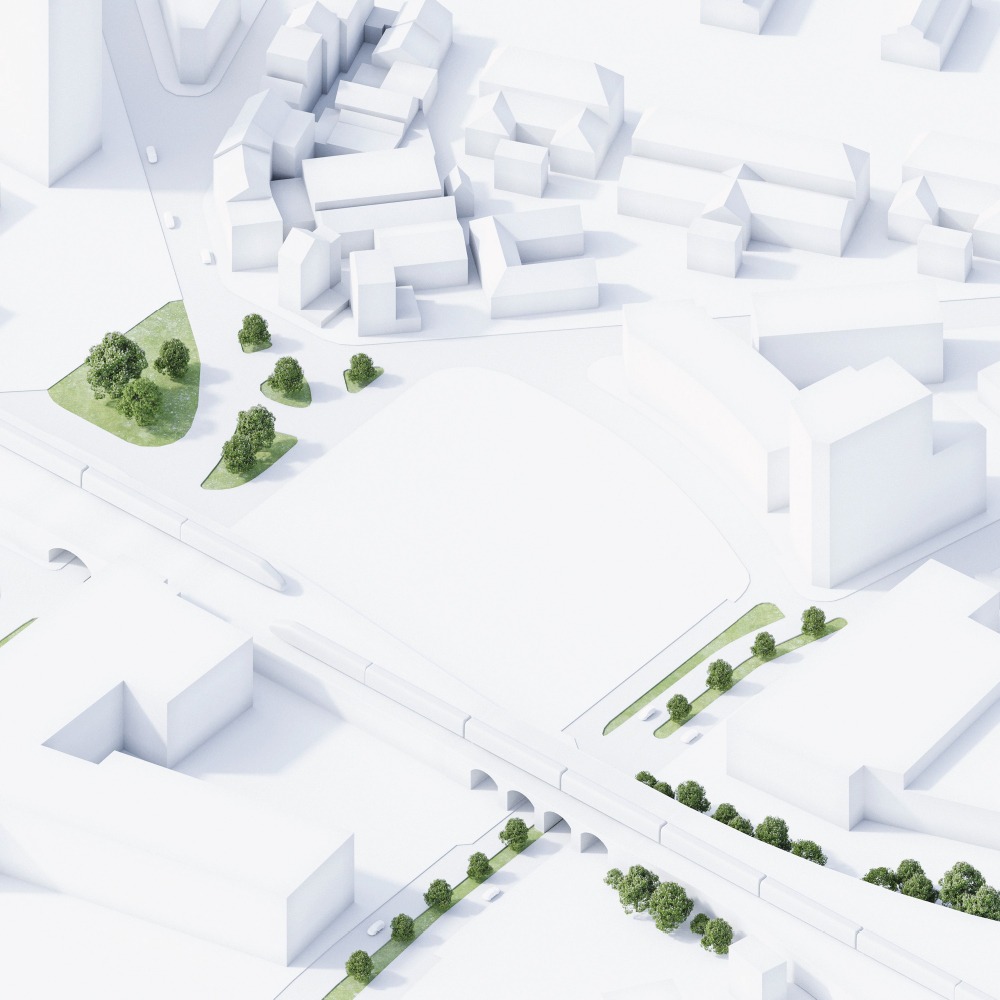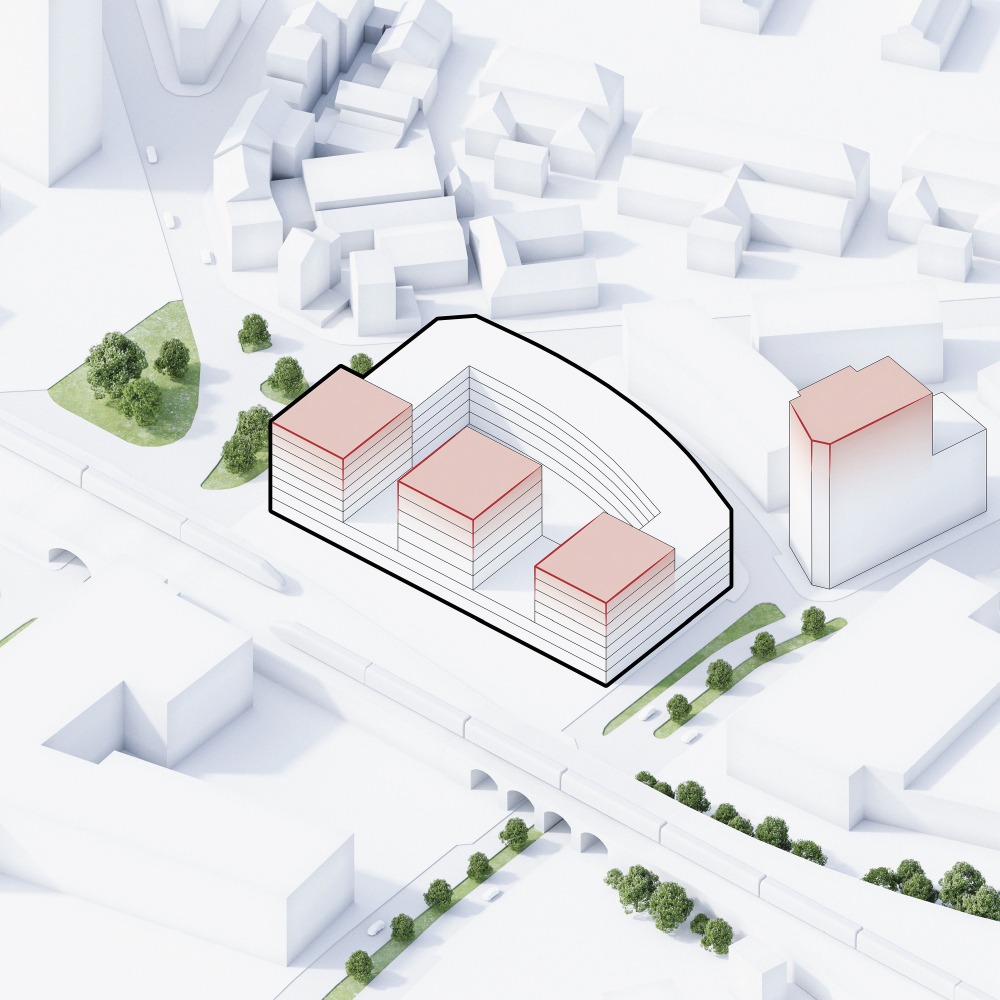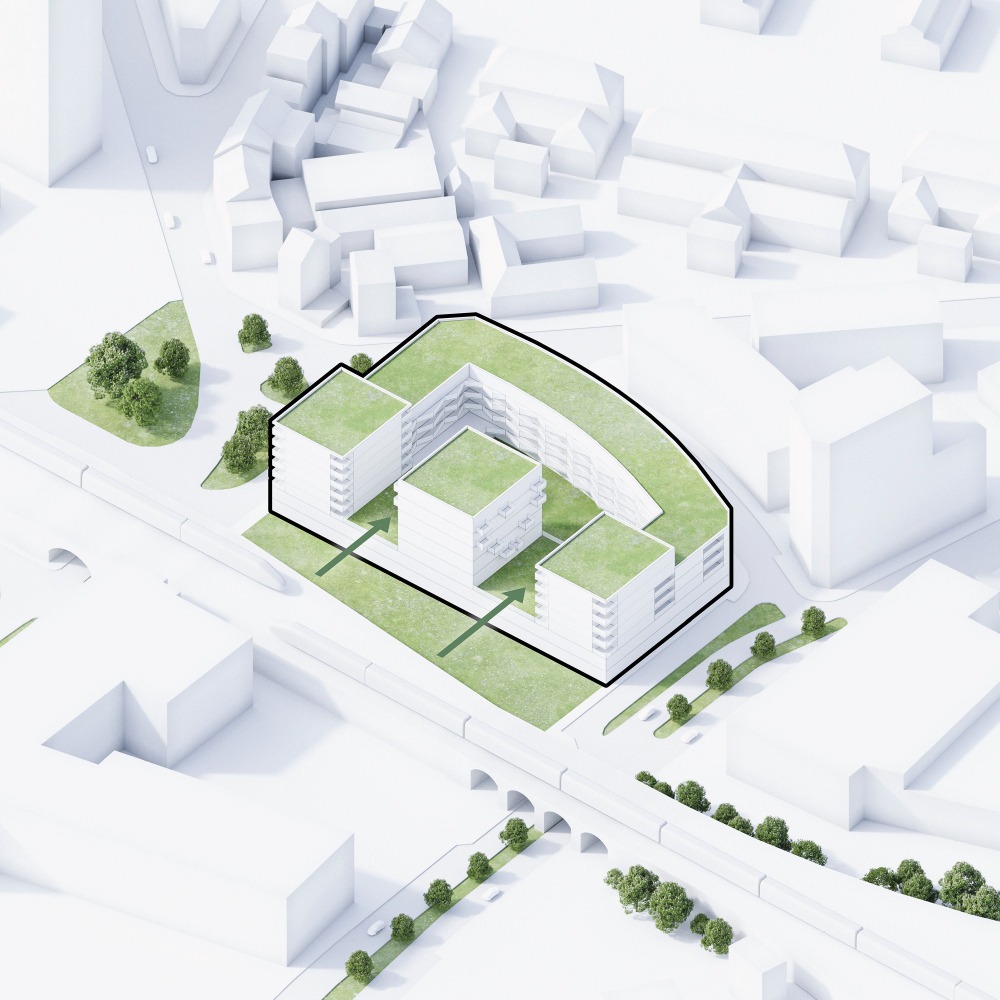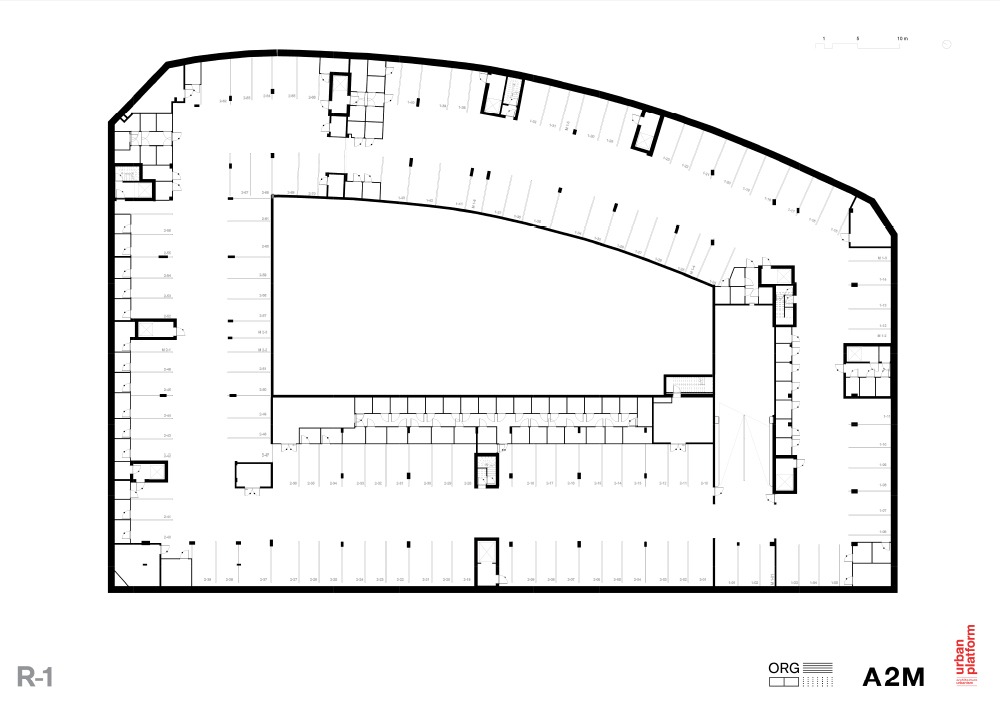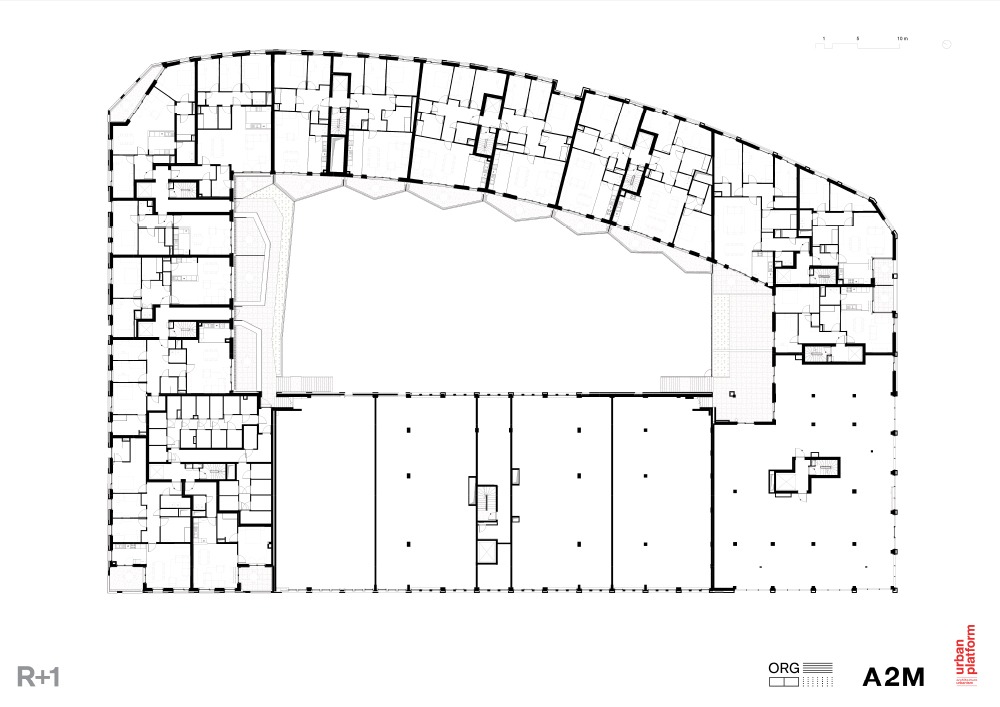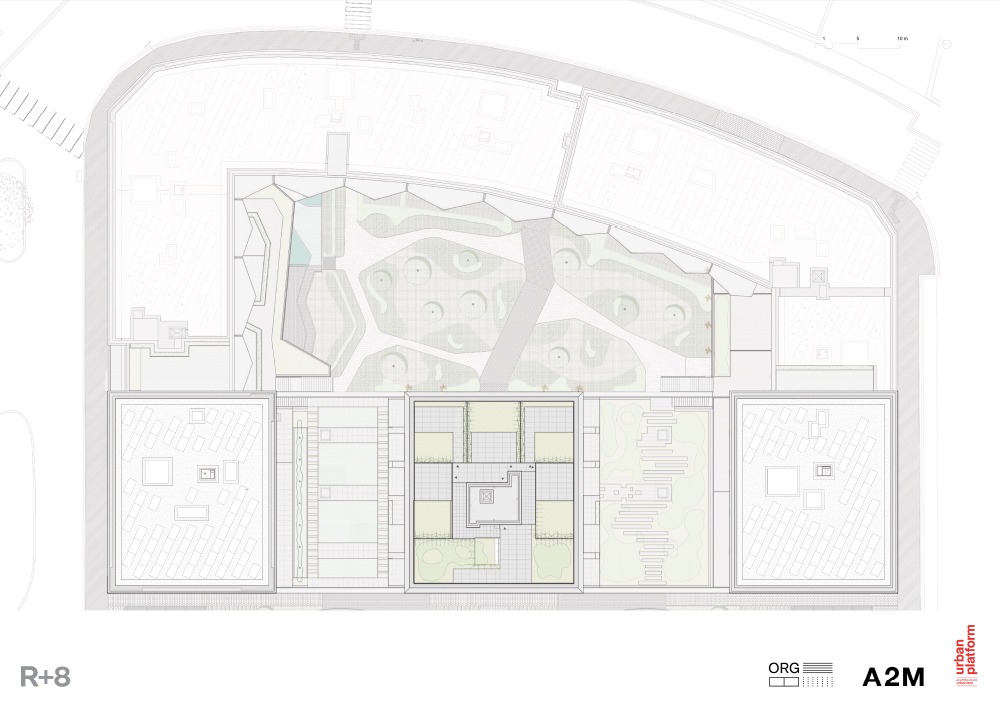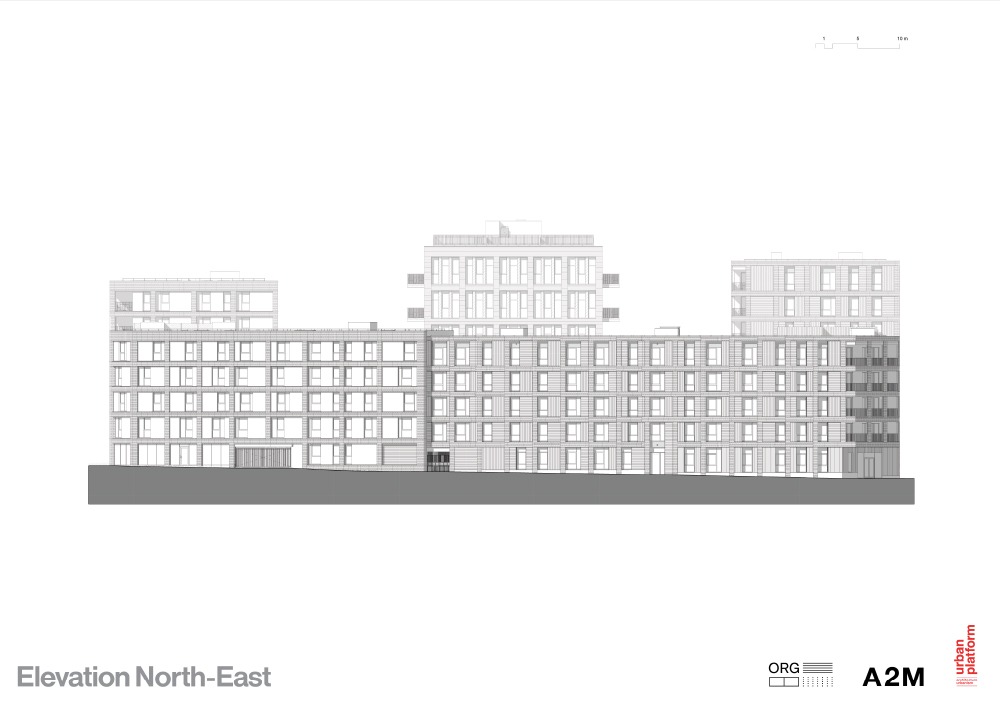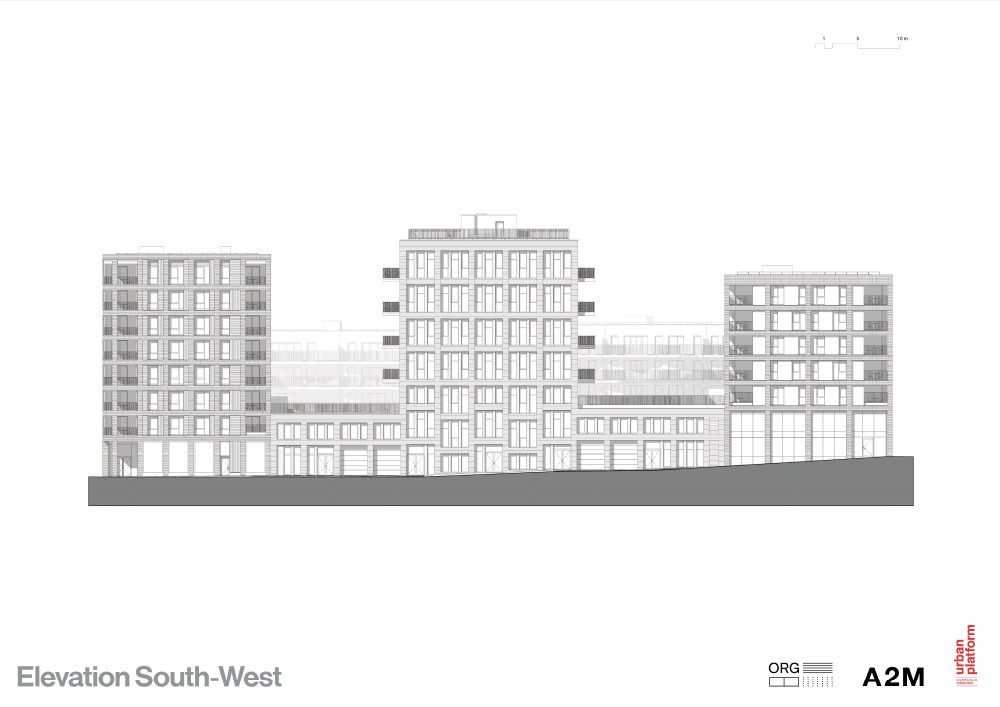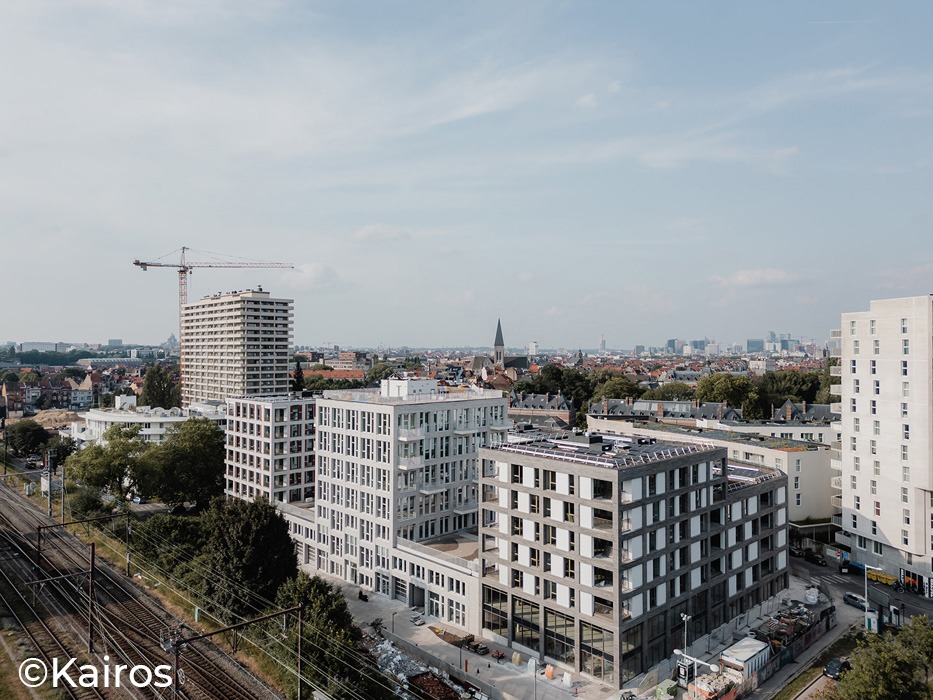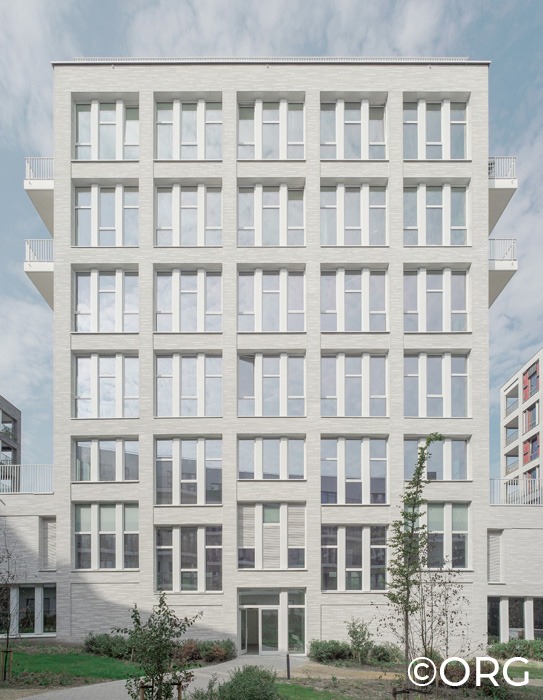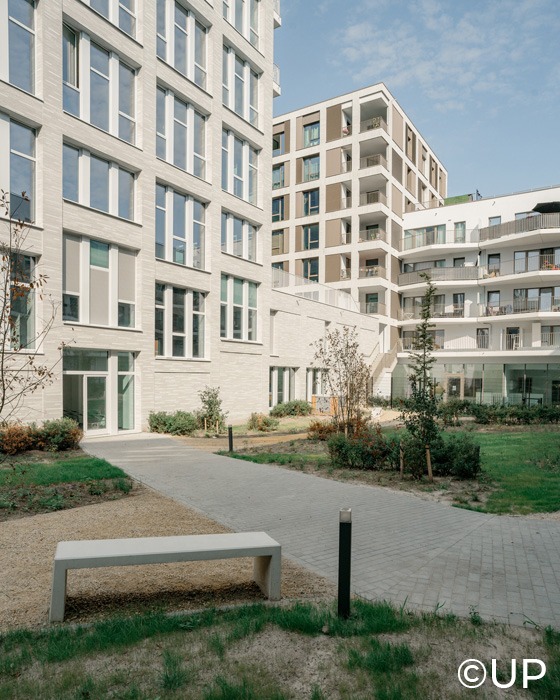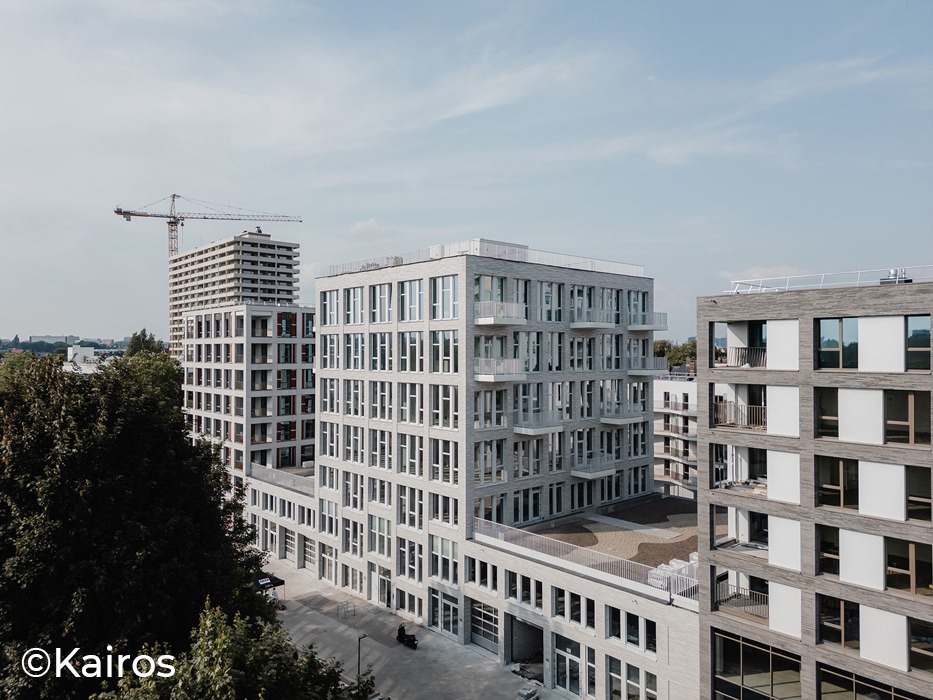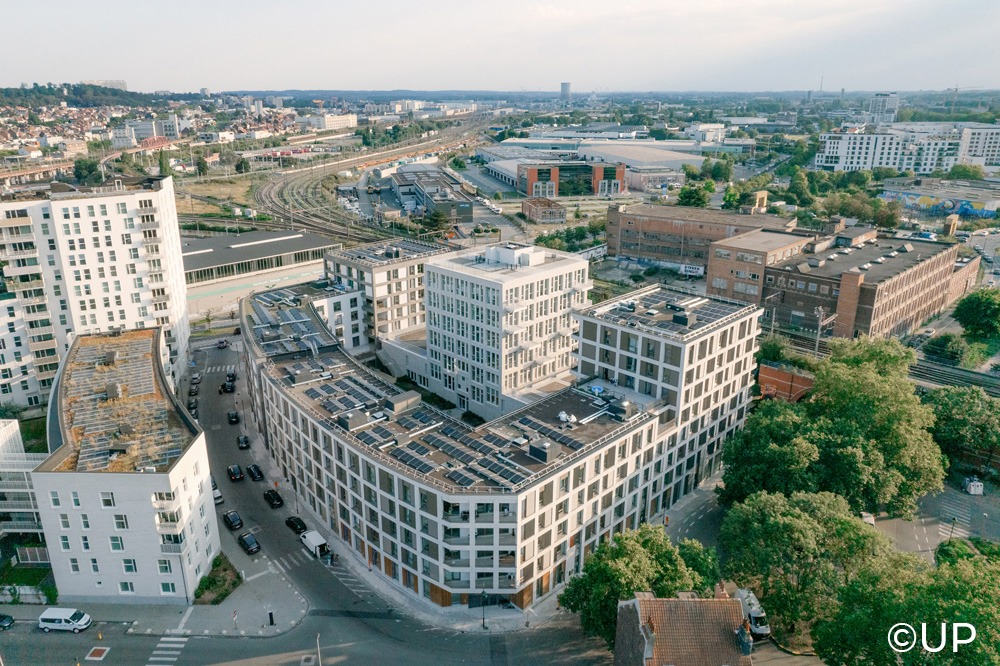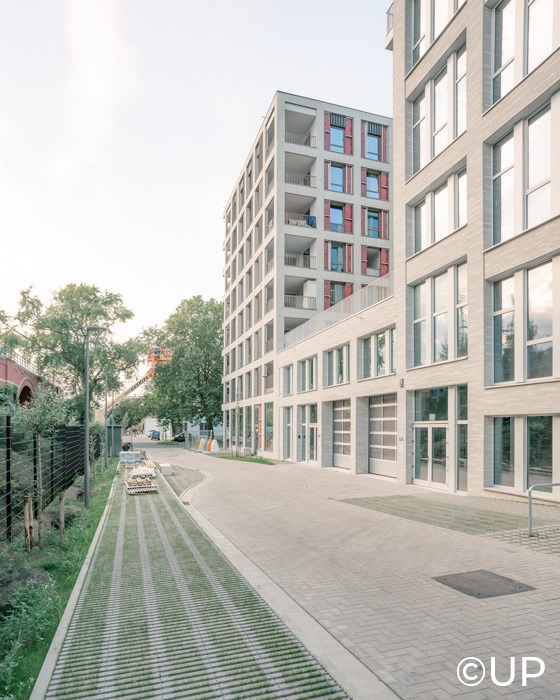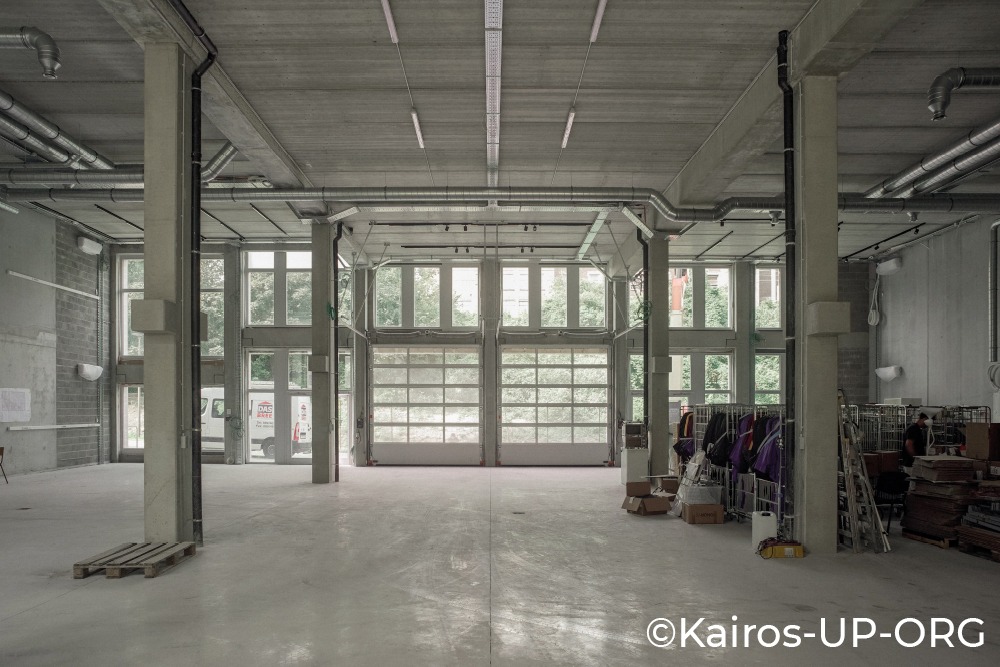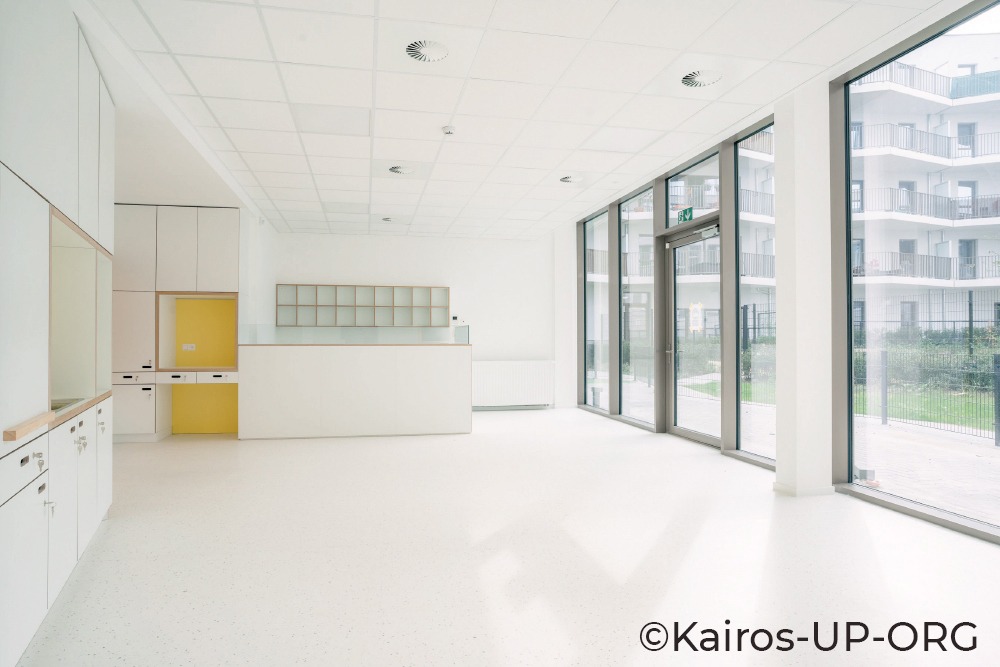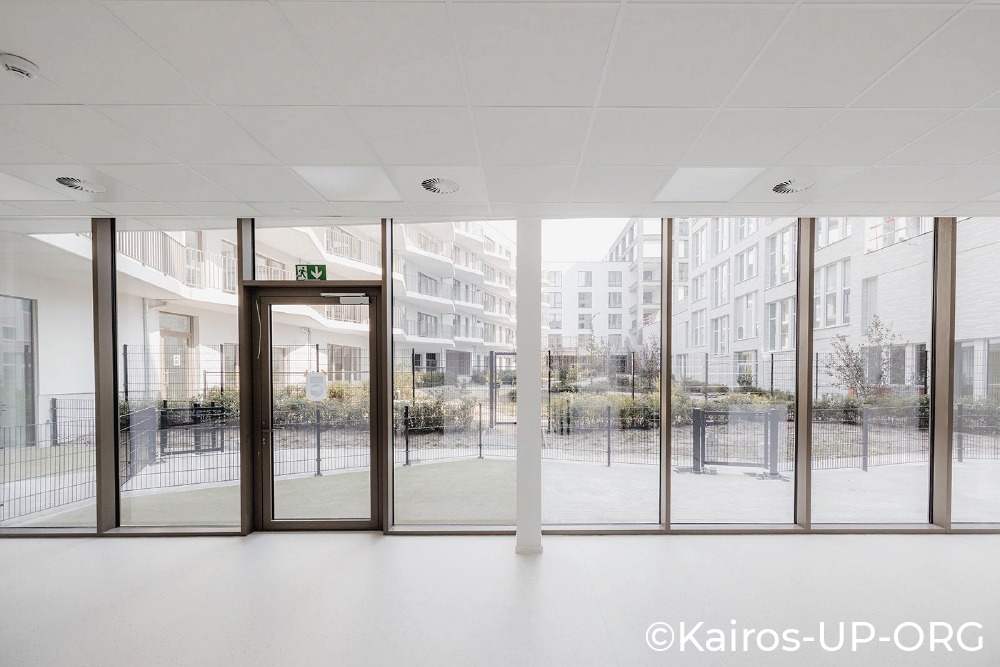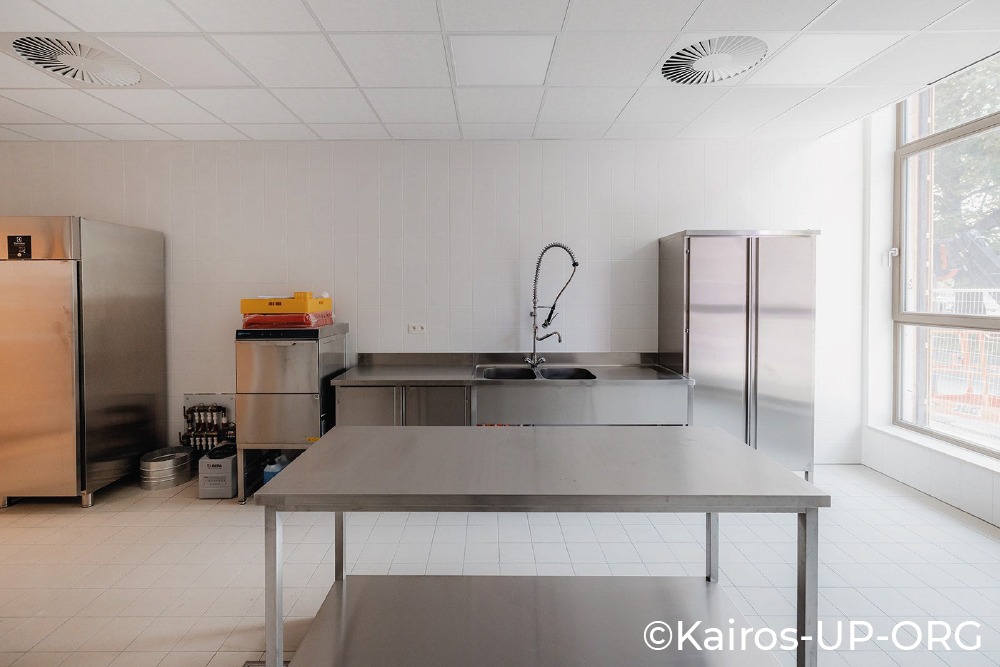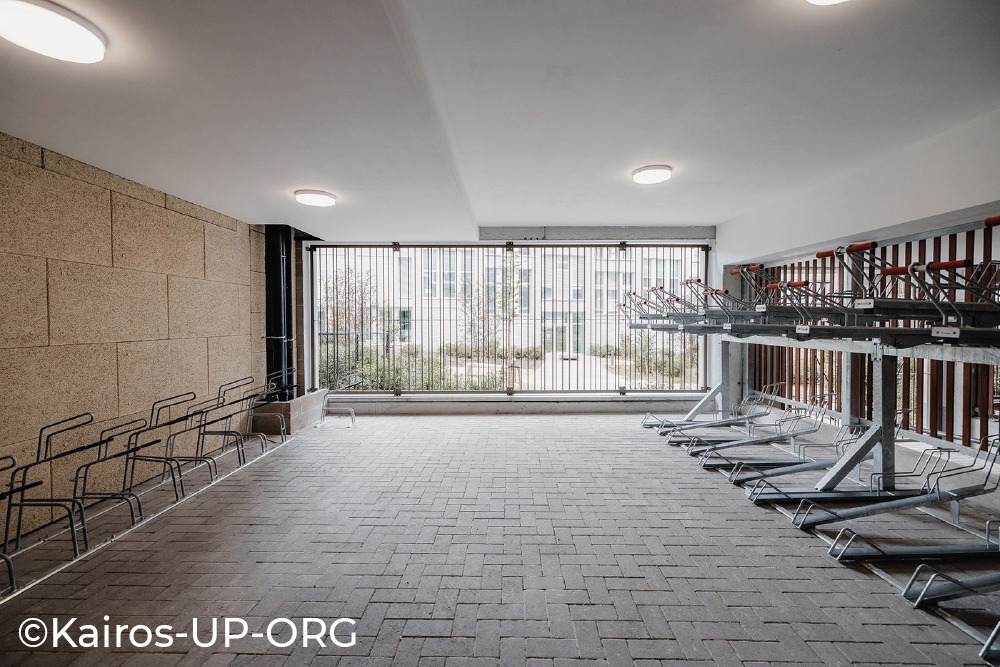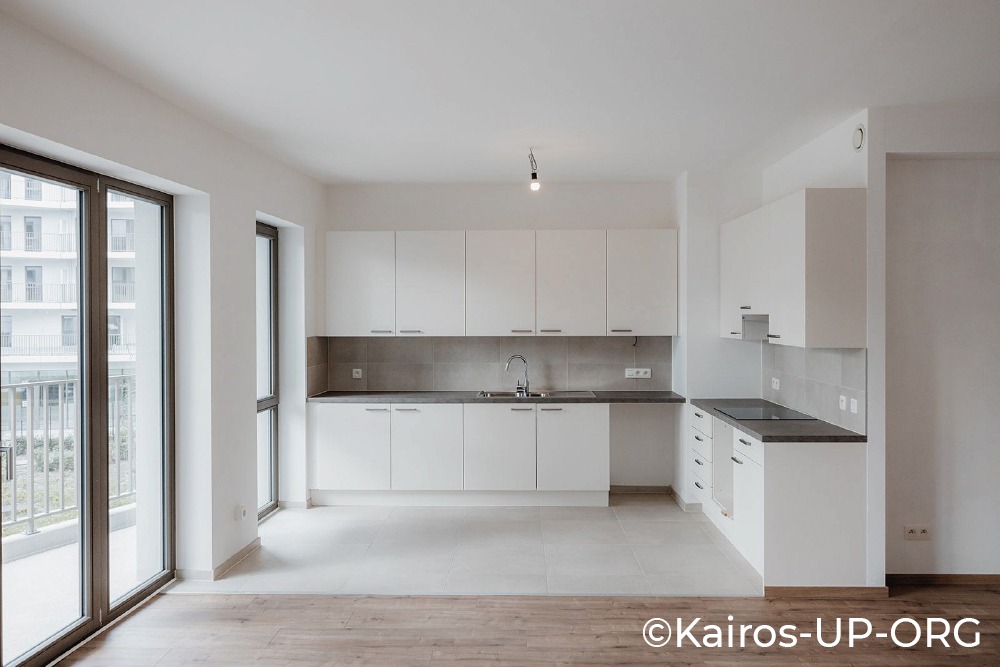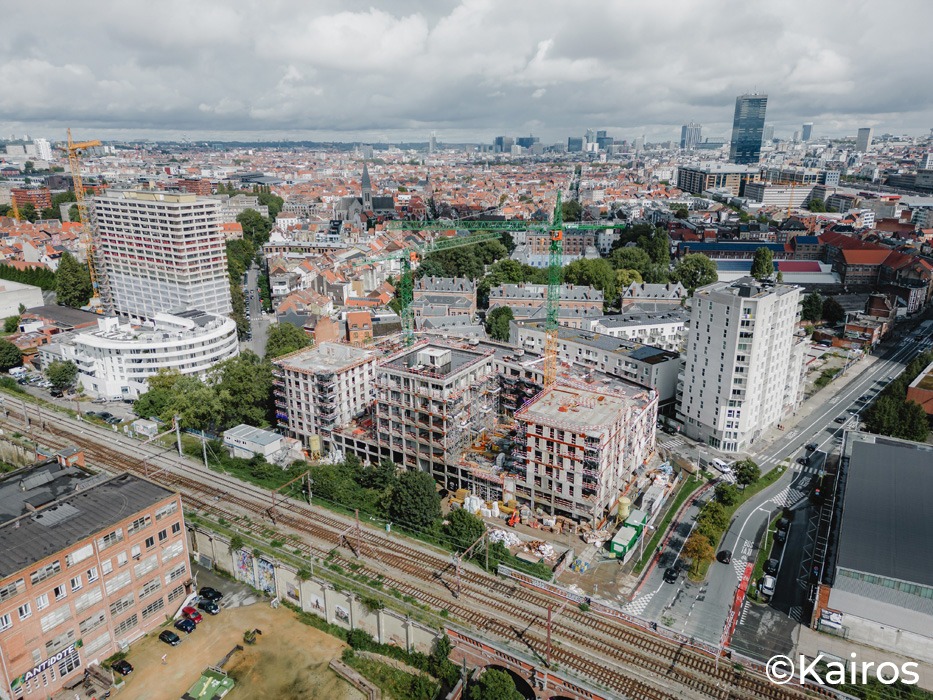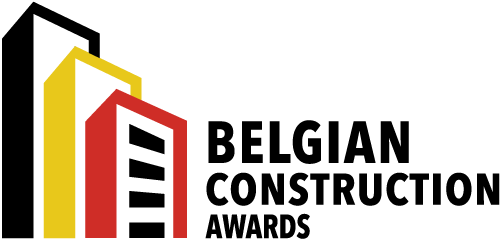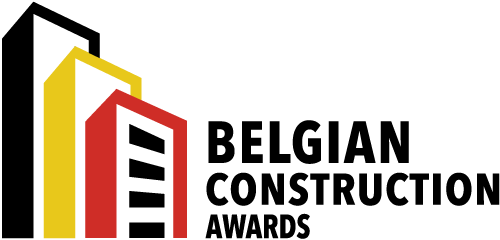Citygate I – Marchandises is a mixed-use residential, educational and commercial building block of about 21 000 m² GFA in Anderlecht. It includes apartments, a crèche, parking and offices, light industry and public space. The consortium formed by A2M, Urban Platform and ORG won the design competition for City Gate I with the developer Kairos and the contractor Galère. The project was recently handed over.
Marchandises offers a coherent architectural diversity in response to the site’s complexity and the program with a design focused on interacting programs and openness towards the city. The quality of the Citygate project lies in its multifunctional design, the activation of public spaces, the assurance of residents’ privacy, and the abundant shared green outdoor areas for all building users.
It is located at a key entrance to Brussels, acting as an urban hinge between Anderlecht’s industrial zone and the Gare du Midi district. It addresses critical urban challenges identified in Anderlecht, like lacking green spaces, quality housing, public amenities, and the integration of productive activities within buildings. The challenge was to offer a spatial organization that went beyond layering the programs, achieved by using grids for the horizontal layout and vertically stacking the functions.
The design consists of a refined interplay of different volumes, which, thanks to their scale, materialization and mutual composition, fit perfectly into the environment while still maintaining a distinct identity. It maintains all functions visible to each other while securing quiet and open spaces for residential, childcare and pedestrian and bicycle flows. It maximizes views and lighting for users, and creates a rich, useful, partly public, roof landscape. The urban ensemble is designed on a plinth with work and retail spaces in three towers along the railway. The lower, bent volume along the streets connects to the adjacent buildings and creates continuity between street-level and roofs.
Marchandises’ intention is also to ensure direct accessibility of all housing units to the collective garden by offering each circulation core an entrance from the street and from the block’s interior. This placement allows for meeting places at block level, ensures social control, acoustic nuisance management, flexibility of use, and quality of life for residents.
Architecturally, the project embraces a modular façade design using concrete bricks, reflecting the industrial context and the nearby railway. This consistent use of materials across the façades creates a cohesive yet varied visual identity. The building is designed to integrate naturally with the existing topography, managing different levels across the site to create a cohesive and functional urban space.
The project sets a high bar concerning sustainability: the entire development is energy and scores particularly high on the biodiversity index of the Brussels-Capital Region thanks to the roof gardens and patio. Much attention has been paid to the use of materials, sunning, and the applying sustainable techniques like the systematic reuse of greywater. With this project, we further explore and refine the possibilities to combine business with other urban functions, and further shape the integral and compact city of the future.
